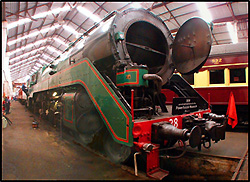Analytical Ferrography (and Wear Debris Analysis) can be viewed as the oil analysis equivalent of CSI forensic science. The wear debris separation is different to WDA test method with the ferrous wear debris in the sample magnetically extracted and deposited on a microscope slide called a Ferrogram enabling a visual, microscopic evaluation of the contaminates separated. Ferrograms are able to be heat treated which forces oxidation colours from the metallic wear debris providing a fast accurate identification of the different types of metal wearing abnormally in the machine sampled.
Vernon C. Westcott is credited with inventing the Ferrograph in the early 1970s. Initially, the Ferrograph was used mainly by the military.
R&T uses Ferrography as one of their fundamental tools for analysing used oil and grease samples with the results used to improve the customers equipment overall reliability. In the hands of R&T’s experienced analysts, Analytical Ferrography is capable of detecting active machine wear and usually provides a “root cause” conclusion based on the morphology of the wear particles.
Due to the method of sample preparation, Analytical Ferrography is biased but not necessarily limited to ferrous particles. By combining Analytical Ferrography with other particle separation and analysis tests the results are capable of determining the Root Cause of;
- Abnormal wear commencement in drives, transmissions, hydraulics and engines,
- Root cause of wear preventing wear failures in drives, transmissions, hydraulics and engines,
- The different component(s) wearing in drives, transmissions, hydraulics and engines,
- The Lubricant condition and suitability of running lubricants beyond their rated life,
- With blowers and compressors; the efficiency and condition of main induction filters
- With combustion engines; the quality of combustion and efficiency of main induction filters
- With turbine fluids degradation of turbine fluid as polar components from the damaged fluid deposit in the magnetic field.
- The types of inorganic contaminates gaining ingress into the oil lubricated area of the plant item being sampled.
- Separation of ferrous and nonferrous contaminates from grease samples.
- Separation of ferrous and nonferrous contaminates from oil filter media.

Ferrogram – Heavy Wear ![]() (100 µm @100X, 20 µm @500X)
(100 µm @100X, 20 µm @500X)

Ferrogram – Moderate Fine Wear ![]() (100 µm @100X, 20 µm @500X)
(100 µm @100X, 20 µm @500X)

Ferrogram – Light Wear ![]() (100 µm @100X, 20 µm @500X)
(100 µm @100X, 20 µm @500X)

Ferrogram – Crystalline Contaminates ![]() (100 µm @100X, 20 µm @500X)
(100 µm @100X, 20 µm @500X)
To differentiate between high alloy wear debris, bearing wear, and low alloy wear debris, gear wear, the ferrogram was heat treated in the furnace, the heat treatment forces oxidation of the metals in the wear debris,
Low Alloy Steel wear debris oxidises blue.
High Alloy Steel wear debris oxidises purple orange red.

Ferrogram – Heat Treated ![]() (20 µm @500X)
(20 µm @500X)
The following article indicates the advantages of monitoring machinery with Analytical Ferrography

Vintage Steam Train 3830, (Built 1951) All axels are rolling element bearings grease lubricated. A WDA was completed on grease samples from all the axel bearings.
Right hand rear bogie trailing axel bearing showed a heavy amount of steel wear debris when compared with the other axel bearings,

Steel Two Body Abrasive Wear Particles ![]() (20 µm @500X)
(20 µm @500X)
There was a Heavy to Severe amount of this broken steel type wear debris present in the sample.
After seeing the WDA results the bearing was checked and larger steel wear debris was found, 20 tons of was Bogie removed and bearing off.

The expanding Inner Sleeve that adjusts the twin row spherical roller bearing’s clearance had collapsed and bearing retaining nut was busy machining the sleeve creating the steel wear debris found, No damage to the bearing housing, No damage to the valuable hard to replace bearing.

Site Engineers re-machined the damaged retaining nut, obtained a new sleeve and back together and ready for use again, rather than a catastrophic loss of wheel once the damaged sleeve munched through the retaining nutThis mini report is what Condition Monitoring is about, find and remove ASAP any abnormal wear that shortens the life of the machinery.
With Gear Drives, Transmissions and Hydraulics the ICP or SE type used oil analysis can sometimes be of use once the plant is running normally across the board but while target cleanness values are being realigned and plant reliability improved the Microscopic Ferrogram or WDA method is far more accurate and will pull target cleanness back into line 2-3 times faster with far less unnecessary oil change work than can be done just using ICP or SE Analysis.
ICP or SE Spectrographic Analysis without WDA becomes reactive maintenance as there is not enough information to be able to root cause the reason for the abnormal results or when catastrophic wear occurs the particle size sensitivity limitations means no significant abnormalities are registered and damage to valuable plant or equipment can occur without warning.
